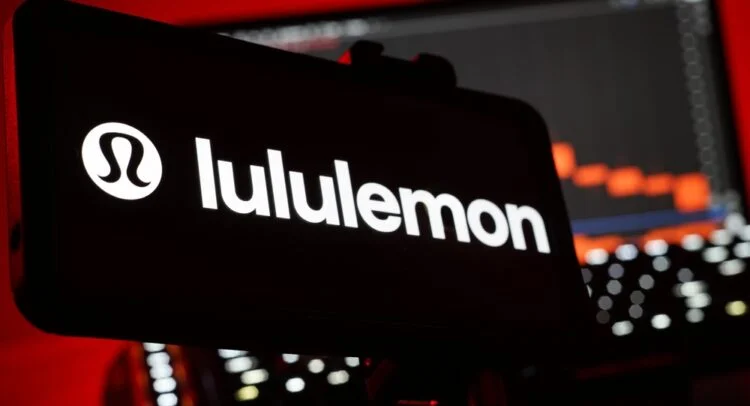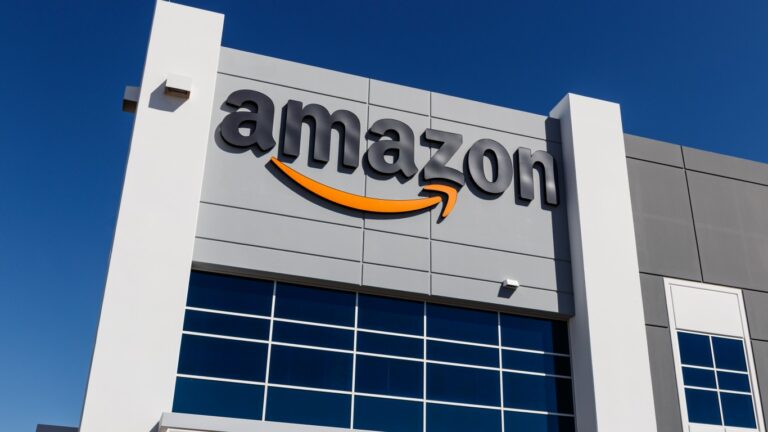
Navigating the auto market in May 2025 amid tariffs and volatility.
At GLHR Investing, we’re diving into the auto market to help you decide if May 9, 2025, is the right time to purchase a vehicle. With Trump’s tariffs shaking supply chains, inflation at 3%, and the S&P 500 (SPY) down 4.8% year-to-date, economic uncertainty is reshaping car buying. Are deals still available, or should you wait? Here’s a comprehensive analysis of today’s economy and stock market, their impact on vehicle purchases, and what to expect in June 2025.
- Current Economic and Stock Market Conditions (May 9, 2025):
- Inflation and Consumer Sentiment:
- Inflation is at 3%, with consumer expectations at 6.7%, per recent data. The Conference Board Index hit a 12-year low (50.8), reflecting fears of tariff-driven price hikes.
- Consumer spending is down 13% in retail, with households prioritizing essentials, impacting discretionary purchases like vehicles.
- Interest Rates:
- The Federal Reserve held rates at 4.25–4.5% in May, with an 88% chance of no cuts, per CME FedWatch, due to tariff-driven inflation fears (4% projected). Auto loan rates average 7.5%, up from 6.5% in 2024, raising monthly payments.
- Trump’s proposed tax-deductible loan interest for U.S.-made vehicles remains unconfirmed, offering no immediate relief.
- Tariffs and Supply Chains:
- Trump’s tariffs (25% on Canada/Mexico, 125% on China, paused April 8 except China) and new probes (semiconductors, minerals) disrupt auto supply chains. A 25% tariff on imported vehicles and parts, effective April 3, raises costs, with some vehicles piling up at ports or on production freezes.
- China’s 84% retaliatory tariffs and rare earth export bans hit chip and battery supplies, impacting electric vehicles (EVs) and hybrids.
- Stock Market:
- SPY is at $513.88, down 2.4% from $526.41, with a 15.6% YTD drop since Trump’s inauguration, nearing bear market territory (17.6% from February’s $613.23 peak). April’s 4.3% decline and VIX at 40.86 signal high volatility.
- Auto-related stocks (e.g., Stellantis, Tesla) slumped due to tariff costs, with Tesla down 44% YTD. Domestic manufacturers (e.g., GM, Ford) hold steadier, benefiting from reshoring.
- Auto Market Snapshot:
- New Car Prices: Average transaction price is $48,641, down slightly from $49,929 in December 2022 but up 1.3% from April 2024, per Cox Automotive. Tariffs are pushing prices up, with automakers like Hyundai absorbing costs for now.
- Used Car Prices: Average price is $25,128, stable but $5,000 above five years ago. Inventory is tight (35-day supply for cars under $15,000), with prices expected to rise in spring.
- Inventory: New vehicle inventory fell 20% in April (Cox Automotive), with Stellantis (Jeep, Dodge) and Nissan oversupplied, offering deals, while Toyota and Honda face shortages.
- Inflation and Consumer Sentiment:
- Is Now a Good Time to Buy a Vehicle?:
- Reasons to Buy Now:
- Incentives and Deals: Automakers are offering larger incentives (e.g., 0% APR on select models, 4% of financing in July 2024) to clear 2024 models before 2025 price hikes. Cox Automotive notes a surge in March–April sales as buyers preempted tariff costs.
- Domestic Vehicles: U.S.-made cars (e.g., Ford, GM) face lower tariff impacts, offering relative price stability. Use tools like CarEdge’s Auto Tariff Checker to confirm.
- Used Car Opportunities: High-mileage vehicles (average 70,000 miles) are more affordable, with stable prices ($25,128) before spring demand spikes.
- End-of-Month Timing: Late May aligns with monthly sales quotas, potentially yielding better deals, especially on Mondays when dealerships are less busy.
- Reasons to Wait:
- Tariff Uncertainty: The 90-day tariff pause ends July 7, but new probes (semiconductors, minerals) signal rising costs. Kelley Blue Book predicts price surges in summer as automakers pass on 25% tariff costs, potentially adding $3,000–$5,000 to vehicle prices.
- Interest Rates: High auto loan rates (7.5%) and no confirmed Fed cuts increase financing costs. Waiting for potential rate drops (forecast for late 2025) could lower payments.
- Inventory Constraints: New car inventory is down 20%, limiting model choices, especially for imports (e.g., Toyota, Hyundai). Used cars under $15,000 are scarce, pushing prices up.
- Recession Risks: A 60% recession probability (J.P. Morgan) and -0.3% Q1 GDP growth signal economic slowdown, which could depress demand and prices later in 2025.
- Consumer Considerations:
- Affordability: New cars under $25,000 are rare (10 models vs. 36 five years ago), with average prices ($48,641) straining budgets. Used cars ($25,128) are more accessible but rising.
- Insurance Costs: Auto insurance rose 7.5% YOY to $2,685 annually, adding to ownership costs, especially for tariff-impacted models.
- EV Challenges: Proposed EV tax credit elimination ($7,500 new, $4,000 used) and a $1,000 EV road tax could raise EV prices, per Senate bills.
- Reasons to Buy Now:
- June 2025 Auto Market Outlook:
- Price Trends:
- New Vehicles: Prices may rise 2–5% ($1,000–$2,500) as automakers pass on tariff costs, especially for imports (e.g., Toyota, Hyundai). Cox Automotive predicts higher MSRP and fewer discounts by summer.
- Used Vehicles: Prices could climb 3–5% ($750–$1,250) due to spring demand and tax refund season, with a 35-day supply tightening for affordable models. X posts suggest used prices may peak in June before falling if economic activity slows.
- Inventory and Incentives:
- New inventory may stabilize if Stellantis and Nissan clear oversupply, but shortages persist for high-demand brands (Toyota, Honda). Incentives (e.g., cash discounts, 0% APR) may wane as tariff costs hit.
- Used inventory remains tight, with prices driven by demand for Ford, Chevrolet, and Toyota models (51% of sales).
- Economic Factors:
- Tariff Developments: Ongoing trade talks (Canada, Japan) could ease tariffs, stabilizing prices, or escalations may spike costs. The Section 232 minerals probe report (due soon) could introduce new levies, impacting EVs and hybrids.
- Interest Rates: The Fed’s June 17–18 meeting is unlikely to cut rates (4.25–4.5%), but signals of future cuts could boost affordability later in 2025.
- Recession Risk: A 60% recession probability and consumer caution (sentiment at 50.8) may reduce auto demand, potentially lowering prices by Q3 2025 if GDP contracts further.
- Market Sentiment:
- X posts predict new car prices staying flat in June but volumes dropping, with used prices potentially falling if employment weakens. This suggests waiting for used cars but acting now for new ones.
- Cox Automotive’s Charlie Chesbrough notes tariffs could “upend vehicle pricing,” with June as a critical month before summer hikes.
- Price Trends:
- Investor and Consumer Recommendations:
- Is Now a Good Time to Buy?:
- Buy Now If: You need a vehicle urgently, prefer a U.S.-made model (e.g., Ford, GM), or find strong incentives (e.g., 0% APR, cash discounts). Late May is ideal for end-of-month deals, especially on oversupplied brands (Jeep, Dodge). Use CarEdge’s Auto Tariff Checker to avoid import-heavy models.
- Wait If: You can delay until summer/fall, seek imports (e.g., Toyota), or prioritize used cars under $15,000, as prices may stabilize post-recession or tariff clarity. Waiting for potential rate cuts could lower financing costs.
- Practical Tips:
- Shop Smart: Compare loan rates from credit unions (6.5–7% vs. 7.5% dealer rates) and get pre-purchase inspections for used cars (average 70,000 miles).
- Trade-Ins: High-demand used cars (e.g., Toyota, Honda) fetch strong trade-in values, defraying costs. Use Kelley Blue Book’s valuation tool.
- Avoid Imports: Models with Asian or European parts (e.g., Hyundai, BMW) face tariff risks, potentially raising prices $3,000–$5,000 by June.
- Investment Angle:
- Auto Stocks: Domestic manufacturers (GM, Ford) may outperform import-reliant firms (Stellantis, Tesla, down 44% YTD) as tariffs favor U.S. production. Consider ETFs like CARZ for exposure, but hedge with gold (GLD) against volatility.
- Defensive Plays: Utilities (XLU) or consumer staples (XLP) offer stability as SPY ($513.88) nears bear market territory, protecting portfolios amid tariff uncertainty.
- Strategy:
- If buying, act in late May for deals on 2024 models, focusing on U.S.-made vehicles. If waiting, monitor trade talks and Fed signals for price relief in Q3.
- Diversify investments with 5–10% in defensive sectors to hedge auto market risks. Watch Q1 earnings (ending May 10) and June Fed meeting for market direction.
- Is Now a Good Time to Buy?:
- Why It Matters: Buying a vehicle in May 2025 is a balancing act between seizing current incentives and bracing for tariff-driven price hikes ($1,000–$2,500) in June. With SPY at $513.88 and a 60% recession risk, the economy favors caution, but strategic buyers can find deals on domestic models. At GLHR Investing, we’re here to guide you through this volatile auto market, aligning your purchases with wealth-building strategies for a secure future.
Drive smart and invest wiser with GLHR Investing—let’s steer through the chaos!
Disclaimer: GLHR Investing is not a financial adviser; please consult one.








